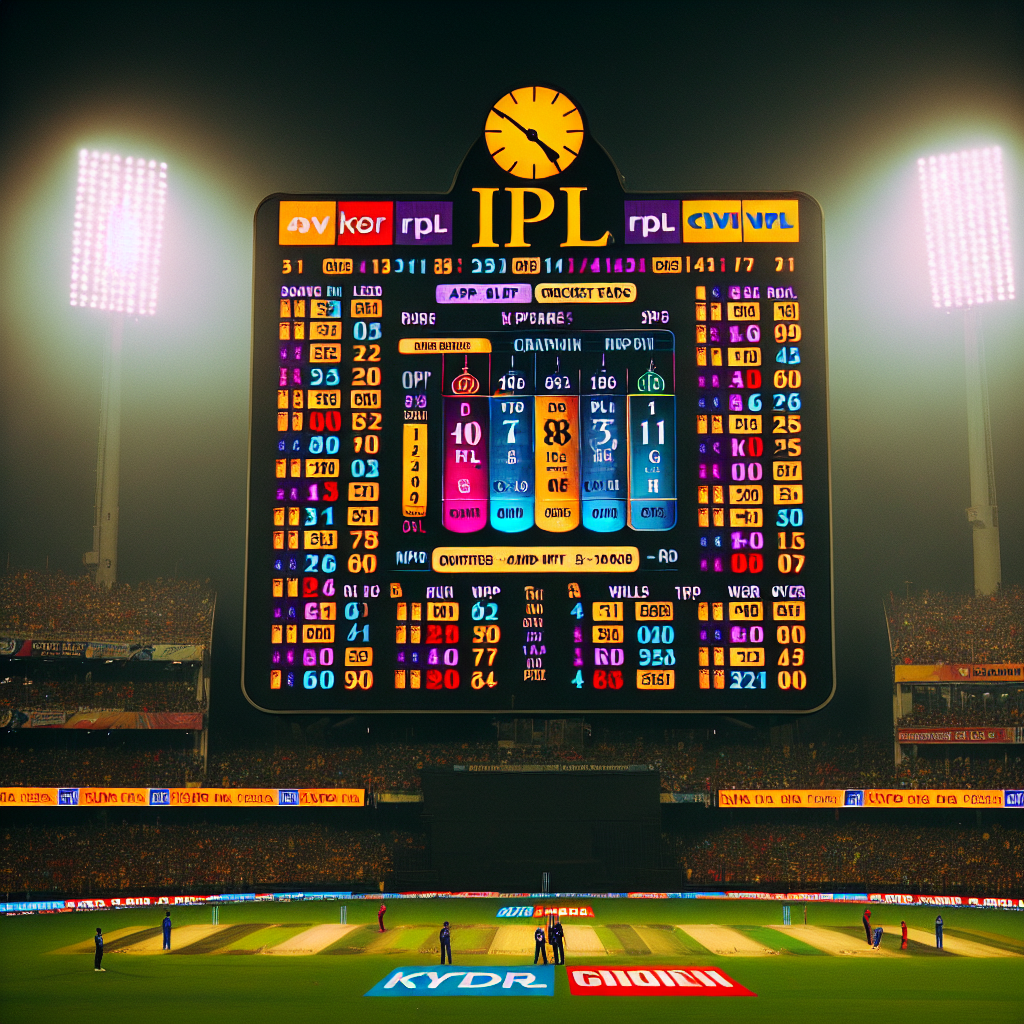Understanding the IPL Points Table: A Comprehensive Guide

The Indian Premier League (IPL) is one of the most celebrated cricket tournaments globally, attracting millions of fans and featuring some of the best cricketing talents. A crucial aspect of the IPL is the points table, which determines the standings of the teams throughout the tournament. This article delves into the intricacies of the IPL points table, explaining its significance, structure, and impact on the tournament’s progression.
The Structure of the IPL Points Table
The IPL points table is a dynamic leaderboard that reflects the performance of the teams participating in the tournament. It is updated after each match and plays a pivotal role in determining which teams advance to the playoffs. The table is structured around several key components:
- Matches Played (M): The total number of matches a team has played.
- Wins (W): The number of matches a team has won.
- Losses (L): The number of matches a team has lost.
- No Result (NR): Matches that do not yield a result due to weather conditions or other factors.
- Points (Pts): Teams earn points based on their performance. Typically, a win awards two points, a loss gives zero, and a no-result match awards one point to each team.
- Net Run Rate (NRR): A crucial tiebreaker, NRR is calculated based on the runs scored and conceded by a team per over throughout the tournament.
Significance of the Points Table
The points table is not just a reflection of wins and losses; it is a strategic tool that influences team decisions and tournament dynamics. Here are some reasons why the points table is significant:
- Playoff Qualification: The top four teams on the points table qualify for the playoffs, making every match critical for teams aiming for the top spots.
- Strategic Decisions: Teams often strategize based on their position on the points table, adjusting their playing XI and tactics to improve their standings.
- Fan Engagement: The points table keeps fans engaged, as they track their favorite team’s progress and speculate on potential playoff scenarios.
Case Study: The 2020 IPL Season
The 2020 IPL season, held in the United Arab Emirates due to the COVID-19 pandemic, provides an interesting case study of how the points table can influence a tournament. The season was marked by intense competition, with several teams vying for playoff spots until the final league matches.
In this season, the Mumbai Indians dominated the points table, finishing at the top with 18 points. Their consistent performance ensured a smooth passage to the playoffs. On the other hand, the Kolkata Knight Riders and Sunrisers Hyderabad were involved in a tight race for the fourth playoff spot, with net run rate playing a decisive role. Ultimately, Sunrisers Hyderabad edged out Kolkata Knight Riders due to a superior NRR, highlighting the importance of maintaining a healthy run rate throughout the tournament.
Impact of Net Run Rate
Net Run Rate (NRR) often becomes a critical factor in the latter stages of the IPL, especially when teams are tied on points. Understanding NRR can be complex, but its impact is undeniable:
- Tiebreaker: When teams have equal points, NRR serves as the tiebreaker, determining which team ranks higher on the points table.
- Strategic Play: Teams may alter their approach in matches to improve their NRR, such as accelerating scoring or restricting opponents to low totals.
- Pressure Factor: The pressure to maintain a high NRR can influence team strategies, leading to aggressive or defensive gameplay depending on the situation.
Strategies for Climbing the Points Table
Teams employ various strategies to climb the points table and secure a playoff berth. Some of these strategies include:
- Consistent Performance: Winning matches consistently is the most straightforward way to accumulate points and improve standings.
- Focus on NRR: Teams often focus on winning by large margins or minimizing losses to boost their NRR.
- Squad Rotation: Managing player workload and rotating the squad can keep key players fresh for crucial matches.
- Adapting to Conditions: Teams that adapt quickly to different pitch conditions and venues tend to perform better.
Conclusion: The Points Table as a Reflection of IPL’s Competitive Spirit
The IPL points table is more than just a leaderboard; it is a reflection of the tournament’s competitive spirit and strategic depth. It influences team strategies, fan engagement, and ultimately, the outcome of the tournament. As teams battle it out on the field, the points table serves as a constant reminder of the stakes involved and the fine margins that can separate success from failure.
In conclusion, understanding the IPL points table is essential for fans and analysts alike, as it provides valuable insights into the tournament’s progression and the strategies employed by teams. Whether it’s the thrill of a last-minute playoff qualification or the heartbreak of missing out due to NRR, the points table encapsulates the drama and excitement that make the IPL a cricketing spectacle.


